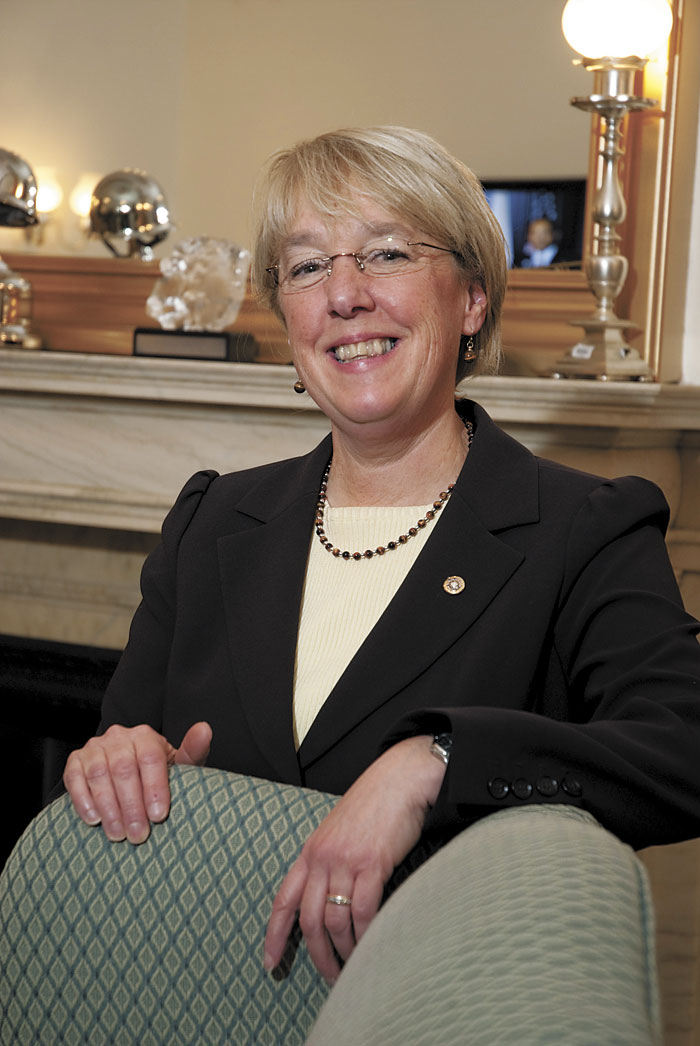After more than a year of negotiating with the feds and local affordable-housing developers, the city’s plan for Fort Lawton’s prime Discovery Park real estate is still uncertain. The city says the U.S. Army came up with a new moneymaking concern that has stunted its decision-making process. What’s more, two of the contenders to develop the property, the United Indians of All Tribes Foundation and the Seattle Housing Authority—parties that haven’t always played nice with each other—could end up being asked to work together.
As part of a process called Base Realignment and Closure (BRAC), the federal government plans to shut down the Army Reserve headquarters at Fort Lawton by 2009. The 38-acre parcel includes a smattering of administrative and maintenance buildings, as well as a cemetery. The city was given the authority by the federal government to choose a developer and sent out a request for proposals (RFP) late last year. But the feds ultimately have veto power over whatever the city decides, and BRAC requires that any redevelopment include low-income housing.
Responses to the city’s RFP came from the United Indians, a nonprofit foundation serving Native Americans that’s based at Discovery Park’s Daybreak Star Cultural Center; the Seattle Housing Authority; and the Downtown Emergency Service Center, a local agency serving the disabled and homeless. The Seattle Veterans Museum also expressed interest, but was discounted early because its vision for the parcel did not include housing.
Both the city and the mayor’s office say they are still mulling over the remaining proposals, a decision they say has been delayed due to federal red tape. But some involved with the process say that SHA has been the clear favorite all along. “It was understood that SHA was going to get it. Everyone thought that from the beginning,” says Susan Balbas, who until last week was spearheading the effort as chief development officer for the United Indians.
Balbas says the United Indians, while not traditionally a developer, carefully sought out its partners to ensure its plan could go the distance. “We…put in a lot of time, money, and effort to come up with a balanced, realistic plan. SHA didn’t do that and were caught by surprise by the strength of our proposal,” Balbas claims.
The United Indians plan includes 291 housing units made up of market-rate condominiums; permanent housing for homeless seniors, individuals and families; office space; a day-care center; a Native American college; and a community auditorium. The development would be intended to primarily serve Native Americans. The United Indians would be the lead developer, with the following partners: the Archdiocesan Housing Authority, the Low Income Housing Institute, and AF Evans Development.
The tribes have a long legacy of trying to take back Fort Lawton. Led by the late Bernie Whitebear in 1970, hundreds of Indians stormed the fort, declaring their intent to reclaim a portion of the land. In 1993, the United Indians proposed building the People’s Lodge, a Native-centric center, adjacent to Daybreak Star. But that plan, which was controversial with the neighbors because of the size of the proposed 148,000-square-foot facility, has been put on hold indefinitely.
“Daybreak Star Center and the United Indian Foundation presence on that site is a special place in Indian country,” says Michael Reichert, the vice chair of the United Indians board who’s also president of the Archdiocesan Housing Authority. “It’s become a great center for Indian culture in the city of Seattle and with the Indian people. It’s a hub of Native activity.
“The Native community in Seattle is a greatly underserved population with many challenging issues in the social service, education, and housing realm,” adds Reichert.
The Seattle Housing Authority also says the opportunity to redevelop Fort Lawton squares with its mission. Its plan for the property includes up to 120 units of market-rate housing and affordable rentals, housing for formerly homeless families, and open space. While SHA would be the lead developer, the proposal includes the Cascade Land Conservancy, Habitat for Humanity, and the YWCA as contributing partners.
Regardless of who’s named the main developer, it’s likely the teams could change. The city will choose the lead but can mix and match the contributing organizations as it sees fit. “We would expect to work with some partners,” says SHA’s communications director, Virginia Felton, “but that’s very much up in the air, if we were chosen to work on this site, who those partners would be.”
One idea floated by city officials would have the United Indians working with SHA, either to provide services or oversee a portion of the redevelopment, something that’s given some observers pause in light of the rocky nature of the two entities’ relationship in the past. For starters, there’s no specialized housing for Native Americans living in Seattle. There’s also the historical sore spot called Leschi House.
As SHA-owned senior housing built in the Central District in the early 1980s, Leschi House was named after a chief in the Nisqually tribe and was envisioned by the tribes as an option for Native elders. But currently, Leschi House has no Native tenants. Felton says the building is not specifically set aside for Native Americans. However, she concedes that “there might have been some indication when it was first built that that might have been the case.”
“Anybody who wants to live there can live there,” she adds. “The fact there are no tribal elders living there might be because they have not applied and gotten through the waiting list.”
“There is a history there,” counters Reichert. “There is a concern that because of the nature of how Indian people are present in communities, it’s important that we have projects targeted to their needs. A general approach to affordable housing doesn’t attract Native people. At Leschi House, [a targeted approach] was the intent, but it didn’t turn out the way that we’d hoped.”
Still, he insists that there are no hard feelings between the United Indians and SHA that would carry over to Fort Lawton. “I don’t see any controversy between us,” Reichert says. “I just think we have a better proposal.”
For its part, the SHA says the ball’s now in the city’s court. The city, meanwhile, claims the feds have thrown it a curveball. The mayor’s office was close to deciding who would redevelop Fort Lawton when the Army stepped in with a new expectation. “Their primary interest is to get as much money out of the property as they can,” says Deputy Mayor Tim Ceis. “It’s more of a negotiation with the Army than we anticipated.”
Neither the city nor the Army will disclose what the property is worth, but sources close to the negotiations say it’s more than $100 million. To further complicate matters, the Army has not yet stipulated whether it would sell or lease the land to the city or its chosen developer. Mark Ellerbrook, homeownership program manager with Seattle’s Office of Housing, says the Army has “intimated they see this as one of their high-value properties….They’re trying to reconcile what they’re seeing as a high-value property with what the site can allow.”
Asked if SHA and the United Indians are capable of working together on the project, Ceis says, “Those kinds of relationships are pretty important to making it successful, but it all depends on what uses we agree with the Armywill be on the site.”
The Army says simply that it’s waiting for the city’s pitch. “We’ve been expecting a copy of the reuse plan since June,” says Army Corps of Engineers spokesperson Doug Garman. “The staff have been in contact with the deputy mayor’s office in Seattle. We haven’t told the city to stop anything.”
While they are invested in seeing this through, Balbas says the United Indians do not see this as a contentious process. She says the tribes, because they have federal status, could have gone straight to the feds to negotiate for the property. “But we choose not to,” she says. “We want to be able to do housing in the future and work with the city. We don’t want to ruffle any feathers….We’re just concerned about providing housing for Native people.”






